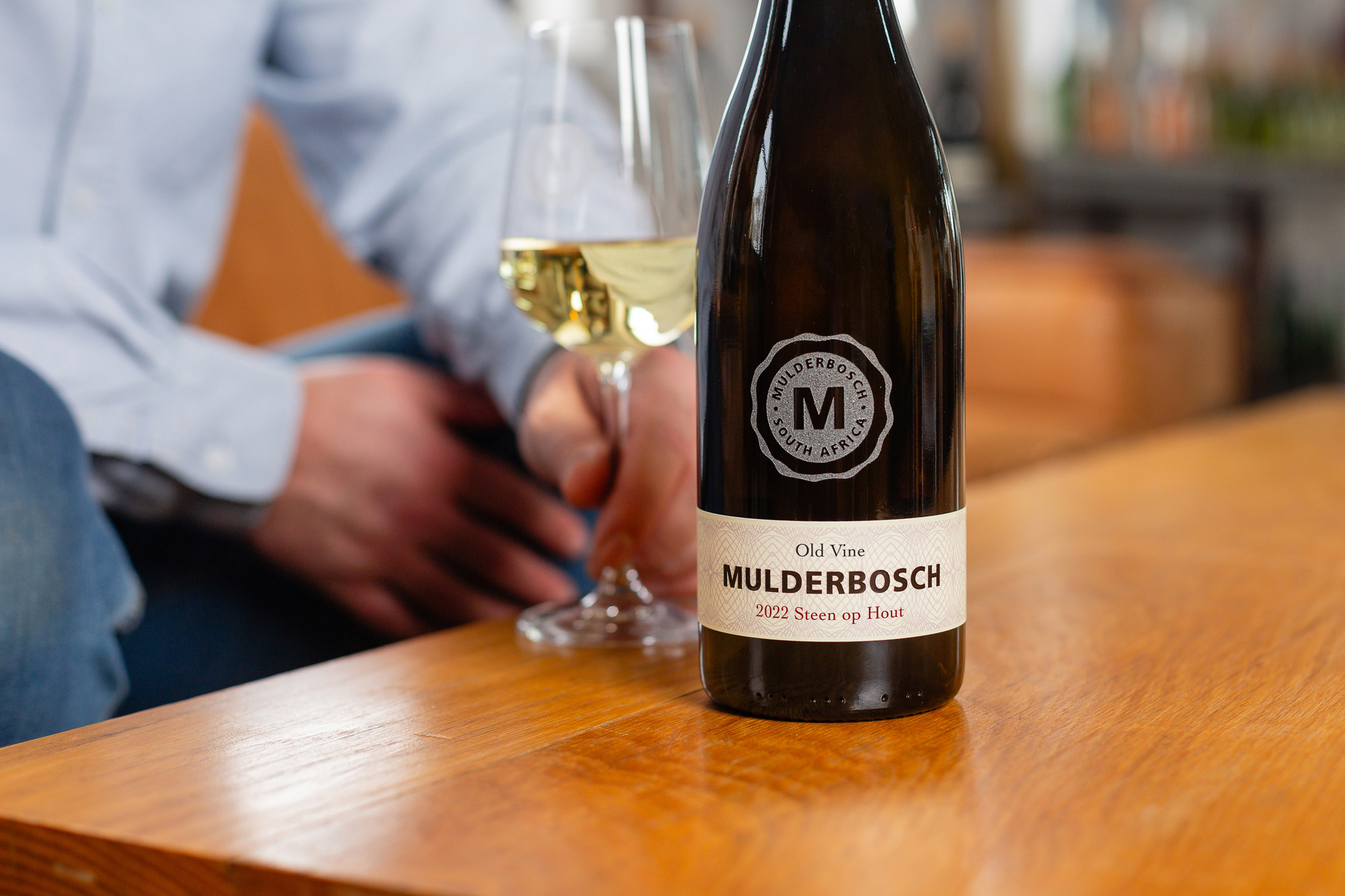Mulderbosch Vineyards, one of the country’s earliest exponents of barrel-fermented Chenin Blanc, is sending an unashamedly South African message to its international markets as it uses the iconic Steen op Hout labelling for both its critically admired wines made from the country’s flagship white grape.
The Stellenbosch estate is doing away with its variously named Chenins of the past, sticking exclusively to Steen op Hout for two wines, one a special edition site- and soil-specific wine, the other a much-loved offering that has formed part of its core range for nearly 30 years.
Mulderbosch celebrates its 35th year this year. Its maiden Steen op Hout vintage was 1996, when it brought to market an exciting new expression that helped to reposition Chenin Blanc as a noble variety worthy of attention.
Steen is the colloquial name for Chenin Blanc, a contraction of the original Dutch, “steendruif”. The Afrikaans name “Steen op Hout” translates literally as “Chenin on wood” and is a reference to its fermentation and maturation in oak.
The revised, streamlined labelling sees the renamed Old Vine Steen op Hout (formerly the Chenin Blanc Block W) at the apex. The 2022 vintage, that has just earned 95 points in the 2024 Tim Atkin MW South Africa Report, is made from dry-farmed Stellenbosch bush vines planted in 1978, in ancient soils derived from Cambrian Cape granite and cooled by the nearby False Bay coastal winds. Certified by the Old Vine Project, the heritage vines were 44 years’ old at the time of picking.
The whole-bunch pressed fruit was fermented in large 1 500 litre foudres and spent 12 months on the lees before bottling.
Others to praise the Old Vine Steen Op Hout include Decanter, US critic James Suckling and locally, the Platter’s South African Wine Guide.
Meanwhile, the popular mainstream Steen op Hout, sourced from a range of Stellenbosch vineyards and partially fermented and then aged in French oak barrels and foudres for eight months, also continues to get the thumbs-up.
The Old Vine Steen op Hout is a very aromatic, delicately layered, complex expression of Chenin with flinty, mineral notes, whereas the core Steen op Hout is fresh and vibrant with a hint of salinity.
Some US market observers describe Chenin as the gateway grape into the South African wine category. When sommeliers and other wine buyers sample it for the first time, they are so impressed that they are encouraged to buy it along with other South African offerings.
As winemaker Henry Kotzé says of sticking with steen: “Mulderbosch has always stood out as one of the few producers in modern times to fully embrace the local, vernacular name for Chenin. The variety was known by this name as far back as the 17th century when the first plantings were brought by the Dutch to the Cape. ‘Steen op Hout’ tells it like it is, simply, loudly and proudly.”
Ina Smith, renowned Chenin Blanc advocate, who has played a leading role in transforming the profile of the former workhorse grape into South Africa’s signature white variety, adds: “This century, well before local Chenin had begun to earn international critical recognition and acclaim, there were a few early stalwarts at the Cape who believed in the grape and were comfortable with the original, vernacular name. After all, it was used by the country’s earliest winemakers and there’s even speculation that the Cape’s first harvest in 1659 may have featured Steen.”
South Africa has 51% of the global total of 32 000 ha of Chenin under vine. Just 8% of local plantings are in the Stellenbosch area. The grape is native to the Loire, France. Several critics, including Tim Atkin MW, have commented on how the Cape’s Chenin innovations have galvanised French winemakers into re-evaluating the grape’s potential.
In his most recent South Africa Report, Atkin wrote: “Whisper it in the cellars of Savennières and Vouvray, but the Cape has definitely eclipsed the Loire Valley as the source of most of the planet’s best dry Chenin Blancs.”

